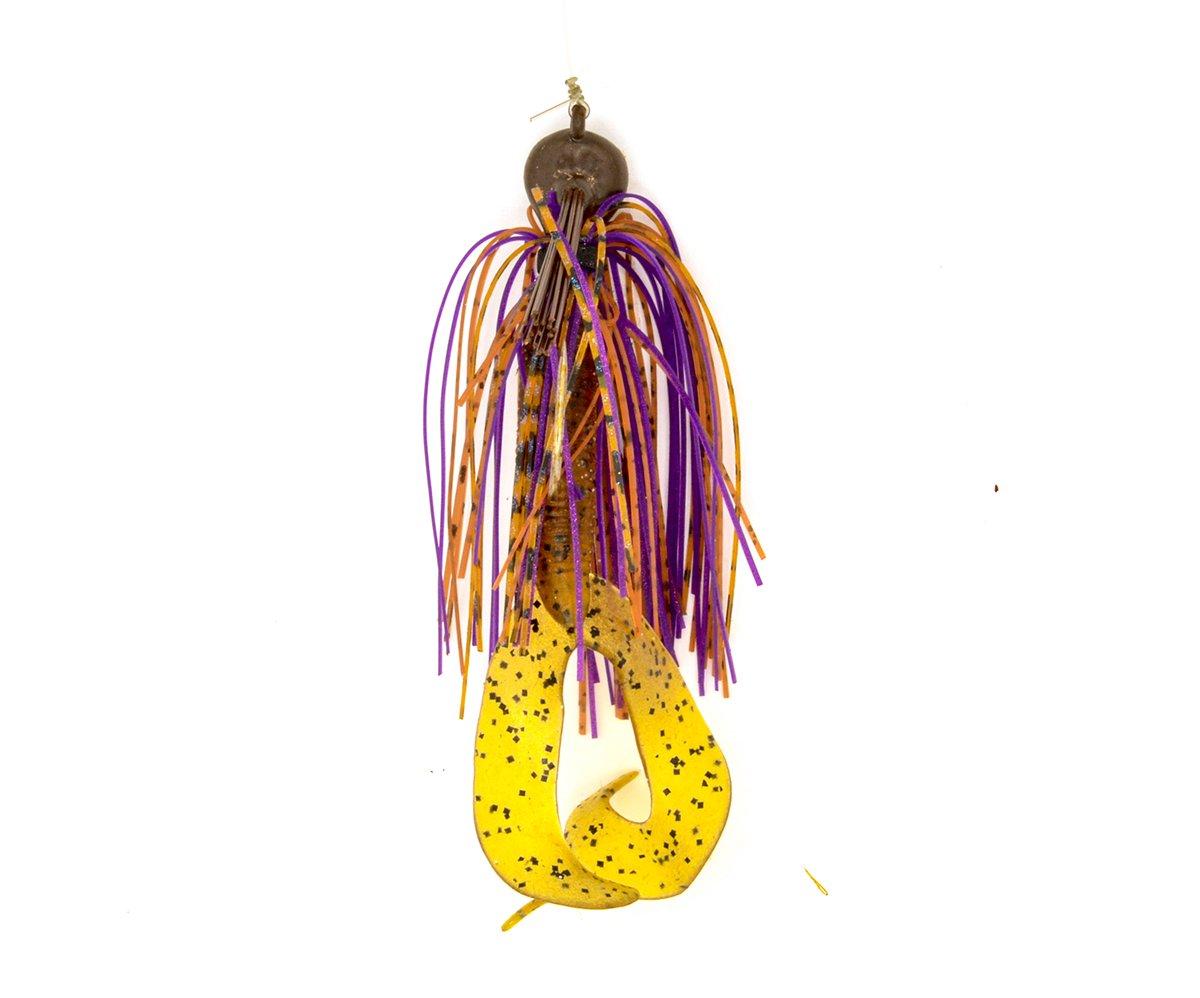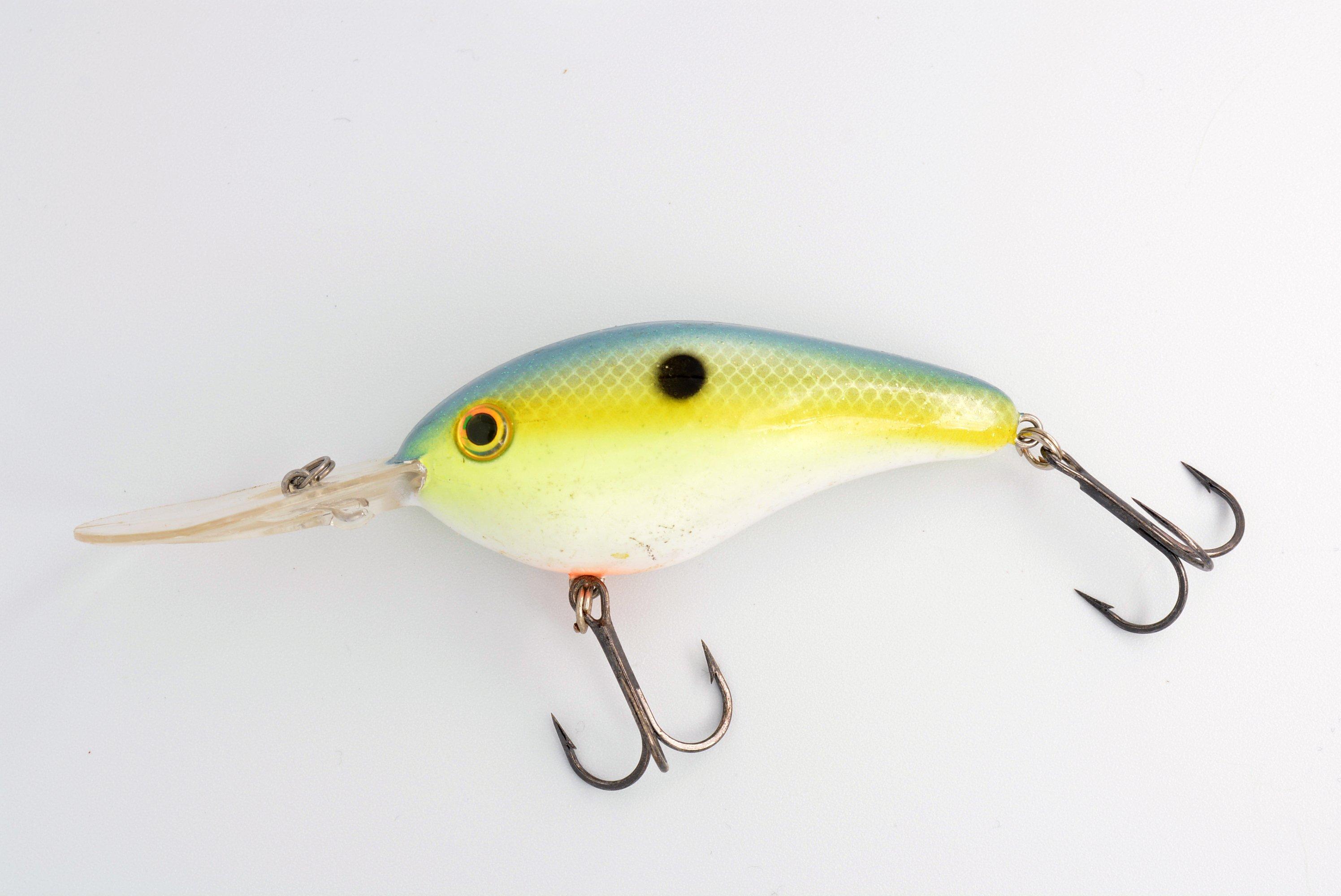Catch fish through the dog days by tying on one of these classic baits
Summertime bass fishing is a boom or bust sport. Long periods of inactivity are interrupted by brief moments of greatness, when it seems nothing can go wrong.
The reasons for this are simple. Following the springtime spawn, bass begin to group up and move offshore, where they favor subtle spots that are often overlooked by anglers. In addition, warm water temperatures signal a high metabolism in the fish, allowing them to actively feed at any time of the day or night. It's easy to miss these opportune times.
Effectively covering water is the key to catching summertime bass, so lure choices for the warmer months must match the criteria. Let's look at the five best choices for bass fishing in the heat.
1. The Texas-Rigged Plastic Worm
A big worm is the original offshore bass fishing lure. Fans of the sport will remember burning through bags of Fliptails and Jelly Worms decades ago when bass fishing evolved into a structure sport.
Today, a Texas-rigged worm still catches bass just like it did back then. Sure, there's some modern equipment that makes worming even more effective, like tungsten sinkers that let you feel every pebble on the lake floor, and stealthy fluorocarbon fishing lines. But the concept behind worm fishing is still pretty basic: get a big bait to the fish and keep it on the bottom.
Realtree pro Justin Atkins confirms his favorite bait for summertime bass: The 10-inch Berkley Powerworm, no doubt. Atkins relies on a variety of colors, including Red Shad and Blue Flake, both, again, classic examples.
You see, no two worms look the same to the fish. The way you drag or hop your bait is unquestionably different than the way I do.
As anglers begin to expand the range of their worm fishing, it's important to consider the major attraction is the technique: the unique, irregular way a plastic worm slithers across the bottom.
You see, no two worms look the same to the fish. The way you drag or hop your bait is unquestionably different than the way I do. And each method works. Also take into account that plastic worms undulate and quiver every time they hit an object, be it a stump, rock or old house foundation, again triggering more fish into biting.
The key to worming is to move the lure in small hops. Vary your sinker size to allow the bait to get down, but not dig in the muck. If current is detectable on your fishing spot, pick a size that allows the bait to slightly tumble downstream. That's a real killer.
(Killer Buy: Realtree Wav3 White Patch Mesh-Back Hat)
2. The Jig-and-Plastic
Second only to the plastic worm in originality, the jig has historically been a great summertime lure, especially for large bass.
Here, we're talking rubber-skirted bass jigs; old timers remember tipping them with pork rind baits, creating the jig-n-pig. Today, however, plastics offer great options for jig trailers, and come in a variety of shapes and sizes.
I think the best summertime bait is a jig, says superstar angler Casey Ashley. It mimics a bream and a crawfish, and it's versatile enough that I can fish it deep or shallow.
(Don't Miss: Best Lures for Crappie Fishing: Jigs vs. Minnows)
Regardless of water depth, Ashley targets cover when jig fishing, and he likes to get into the thick of things. My go-to jig setup is a Greenfish Skipping jig in Peanut Butter and Jelly with a Zoom Twin Tail trailer. Docks, laydown logs, and offshore brush are all fair game. Jigs are great for that style of fishing, since they have a strong weed guard and can crawl through just about anything.
They do, however, require a stout hookset from a capable rod. Be sure to choose a medium-heavy or heavy power stick, at least 7 feet in length. Long rods pick up more line on a hookset than shorter ones, allow you direct contact to the fish, and the leverage to move a big bass away from line-breaking cover.
3. The Deep-Diving Crankbait
Big-lipped plugs were all the rage in the early '80s, and they continue to catch bass today. Nothing covers water faster, as crankbaits can be retrieved at break-neck speeds and still produce fish. In fact, it's speed that triggers strikes and makes cranking a favorite summertime tactic.
While a feeding fish is sure to slurp up a plastic worm, crankbaits often cause bass to strike out of reflex as much as hunger. Given our summertime weather, bass fishing in the heat often forces us to fish for inactive bass. Yet, as a top territorial predator, bass rarely allow intruders into their realm without taking a bite, making speedy crankbaits a target.
But before you get out your old plugs, consider one detail: today's divers are simply better lures. Most modern baits include weight-transfer systems, a fancy term for a design that allows them to cast much farther than the plugs of old. This is incredibly important when crankbait fishing. The longer the cast, the longer the plug will remain down deep, in front of summertime lunkers.
While a feeding fish is sure to slurp up a plastic worm, crankbaits often cause bass to strike out of reflex as much as hunger.
Another important variable when crankbait fishing is line choice. Here, fluorocarbon is king, as the dense filament gets deeper than traditional monofilament, and transmits strikes better. Choose the lightest line you can get away with, and you'll get your plugs to the strike zone faster.
The lures themselves come in a wide variety of shapes and sizes. For the most part, the bigger the lip, the deeper the plug will dive. Colors can be narrowed down to transparent baitfish hues in clear water, while chartreuse-based baits are better in dingy conditions.
One more tip when fishing crankbaits: quality hooks can make all the difference in the world. I still remember when I started paying attention to this aspect of my fishing. After repeatedly watching bass jump and throw my lures, I switched to premium Japanese treble hooks, and my catch rates skyrocketed. Today, every major hook manufacturer makes a high-end, chemically sharpened treble. They're worth the money.
(Killer Buy: Realtree Wav3 Dark Blue Fishing Performance Shirt)
4. The Drop-Shot
Unfamiliar with the Drop-Shot? You shouldn't be.
Over the past decade, the drop-shot method of rigging small soft-plastics has won more tournament money than any other technique. The effectiveness of this rig lies in its unique efficiency in presenting a subtle lure to deep-water fish.
Rigging up is simple. Grab a spinning rod with fairy light line, and tie on a No. 1 hook with a Palomar knot. Instead of clipping the tag end of the knot, crimp on a drop-shot weight, so the hook is now above the sinker. Add a soft, minnow-shaped plastic bait to the hook, and you're ready to go.
With the sinker affixed below the bait, this rig rockets straight down to the bottom, instantly. Once there, the small plastic waves back and forth, essentially on a slack line. It's like a wacky rig, but on the bottom. The unusual, subtle action of the lure draws strikes from the most reluctant bass.
(Don't Miss: The 10 Best Baits for Great Lakes Fishing)
Realtree pro Stetson Blaylock calls a drop-shot his all-time favorite deep-water technique for summertime fishing. His appeal also takes into account the effectiveness of drop-shot rigs for largemouth, smallmouth, and spotted bass, from California to Maine.
It's important not to overwork the rig, though. Essentially, the best rod action for drop-shot fishing is usually none at all. In the deep, open water inhabited by summertime bass, drop-shot-rigged plastics receive plenty of movement from wave action and currents, so anglers fishing the rig are best to let the worm do its part.
A few last tips when fishing a drop shot: first, don't set the hook. A slow, easy pull will get the job done, and do not stress your light line. Also, if line twists become a problem, try tying on a small swivel first, then attach a 6-foot leader to tie up the rig.
5. Topwater Walking Bait
Those in the know call this lure by another name: The Spook. True, the original Zara Spook has probably caught more bass on top than any other surface bait. The lure and technique date back to wooden versions used in the 1930s. Nearly a century later, topwater walkers like The Spook are still catching bass.
The bait's appeal is in the seductive back-and-forth action of the lure, as dictated by a skilled angler. There's something about the way the lure sashays left and right, back and forth, that seems to hypnotize bass and make them strike. Largemouths are suckers for such baits, and smallmouths go bananas.
Topwater walkers are best fished in relatively clear water, especially when targeting bass holding deep in summer patterns. Don't think those same fish won't rush off the bottom to blast a lure on the surface; I've seen bass routinely rise 20 feet to hit this bait. Target main lake points, riprap shorelines, and deep boat docks in the early morning hours.
Those in the know call this lure by another name: The Spook.
Waking a spook is easier than it looks. A baitcasting rod is preferred, as the bait walks best on relatively heavy monofilament, in the 17-pound test range, and a casting rod handles the set-up better.
Start by attaching a snap to the lure, or tying it on with a loop knot. This will ease the lure's back-and-forth motion. Make a long cast, and give the lure a quick jerk with the snap of your wrists, then pause. The lure will walk one direction. From here, reel up the slack line without moving the lure, and repeat. The spook will walk back the other direction. The key now is to train yourself to do this without the pause, taking up just enough slack to keep up with the lure's action, but not reel it toward you. A little practice makes perfect.
Walking topwaters make great river baits as well. Due to their overall large profile, baits like the Zara Spook don't get caught up in current like smaller lures, and they can be allowed to sweep up against and under fishy-looking spots.
The Zara Spook is one of those classic old baits that a few anglers have spent a lifetime fishing. Skilled spook-walkers can nearly make the lure turn in a circle, and utilize half-steps to steer the bait up under willow bushes and boat docks. Again, practice will prove that this skill is easier than it looks.
(Killer Buy: Moorley Coast Hooded Performance 1/4 Zip)












